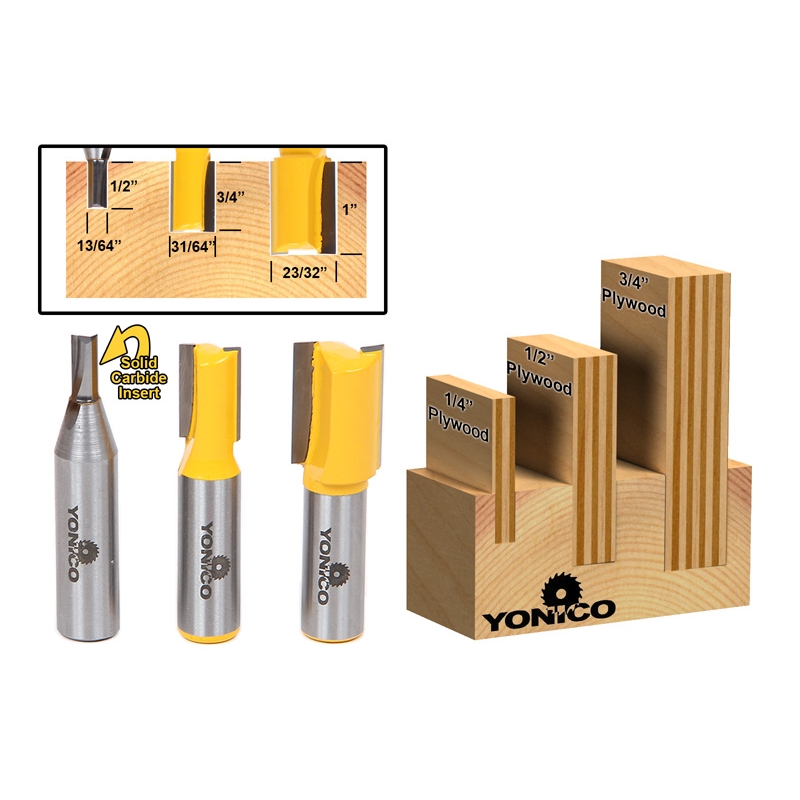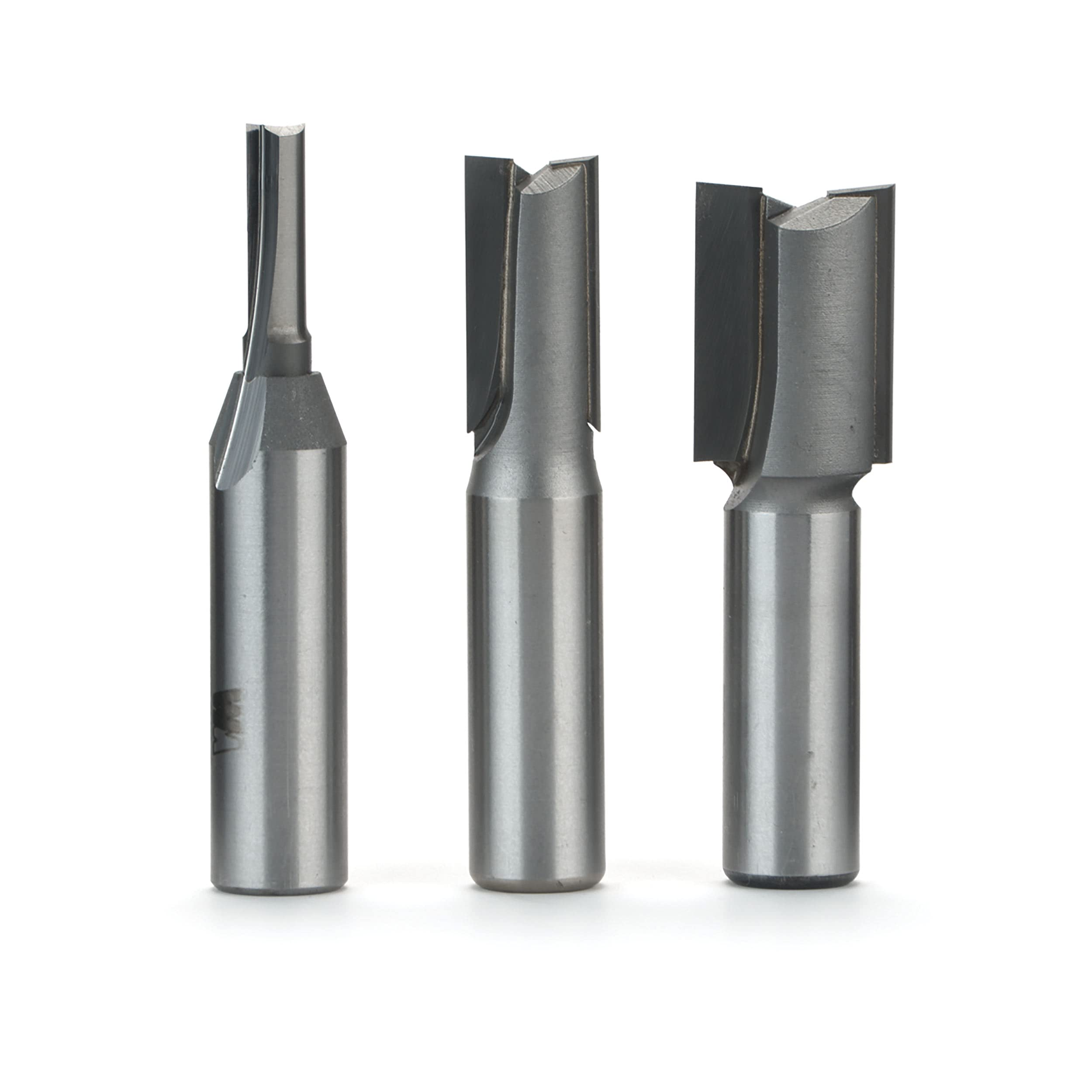What router bit should you use to cut plywood? It’s a question many DIY enthusiasts and woodworkers often find themselves asking. Well, fret not! Today, we’re going to dive into the wonderful world of router bits and explore which one is best suited for this particular task. So, grab your thinking cap and let’s get started on this woodworking adventure!
When it comes to cutting plywood with a router, there are several factors to consider. The type of bit you choose can greatly impact the quality of the cut, as well as the overall success of your project. But don’t worry, we’re here to guide you through the maze of options and help you make an informed decision.
So, whether you’re a seasoned pro or just starting out in the world of woodworking, this article is for you. We’ll break down the different types of router bits ideal for cutting plywood and provide some handy tips along the way. Get ready to unleash the true potential of your router and achieve flawless cuts in plywood like a pro! Let’s dive in!

Choosing the Right Router Bit for Cutting Plywood: A Comprehensive Guide
Router bits are essential tools for woodworking, and when it comes to cutting plywood, selecting the right bit is crucial. With the wide variety of options available, it can be overwhelming to determine which bit is best suited for the job. In this article, we will delve into the world of router bits and provide you with all the information you need to make an informed decision. Whether you’re a beginner or an experienced woodworker, we’ve got you covered.
The Basics of Router Bits
Understanding the different types of router bits is the first step in choosing the right one for cutting plywood.
Straight Bits: For Clean, Straight Cuts
Straight bits are the workhorses of router bits, and they are ideal for cutting straight, clean-edged grooves or dadoes in plywood. These bits have a flat bottom and sharp edges, allowing them to produce precise cuts. They come in various diameters and lengths, so you can select the one that suits your project best. Straight bits also work well for trimming edges and for creating rabbets or dado joints.
Rabbeting Bits: For Creating Rabbet Joints
If you’re looking to create rabbet joints, rabbeting bits are the way to go. These bits have a pilot bearing that rides against the edge of the material, allowing for precise cuts. Rabbeting bits come in different sizes, giving you the flexibility to choose the width and depth of your rabbet joint. They are perfect for plywood projects that require joining panels or creating recesses for glass or other decorative inserts.
Flush Trim Bits: For Smooth, Even Edges
When you need to trim the excess material and achieve a flush, even edge, flush trim bits are your best bet. These bits have a bearing that guides the cutting edge along the edge of the plywood, ensuring a clean and seamless trim. Flush trim bits are available in various lengths and sizes, enabling you to achieve the desired level of precision. Whether you’re working on laminate, veneer, or plywood edging, flush trim bits will give you the professional finish you desire.
Chamfer Bits: For Adding Decorative Edges
If you want to add a decorative touch to your plywood project, chamfer bits are the way to go. These bits are designed to create beveled edges or chamfers on the plywood surface. Chamfer bits come in multiple angles, allowing you to achieve the desired degree of bevel. Whether you’re looking to add a subtle chamfer or a more pronounced edge, chamfer bits offer versatility and can enhance the overall aesthetics of your project.
Cove Bits: For Elegant Curves
If your project involves adding elegant curves or decorative edges to plywood, cove bits are the perfect choice. These bits create concave profiles that are ideal for creating decorative edges or molding. Cove bits come in various sizes, allowing you to achieve different curve depths and widths. Whether you’re creating frames, edging, or intricate patterns, cove bits will help you achieve beautiful and eye-catching results.
Roundover Bits: For Smooth, Rounded Edges
Roundover bits are popular choices for creating smooth, rounded edges on plywood. These bits are designed to remove the sharp edge and create a gentle curve along the edge of the material. Roundover bits are available in different sizes, giving you the flexibility to choose the level of rounding you desire. Whether you’re working on furniture, cabinets, or any other plywood project, roundover bits can give your work a polished and professional look.
Tips for Choosing the Right Router Bit
When selecting a router bit for cutting plywood, keep the following tips in mind:
1. Consider the type of cut you need to make, such as straight cuts, rabbets, or edge trimming.
2. Determine the desired finish and edge profile you want to achieve.
3. Take into account the thickness of the plywood and choose a bit that can handle it.
4. Pay attention to the size and diameter of the bit to ensure compatibility with your router.
5. Check the quality and durability of the bit, as well as the material it is made of.
6. If you’re unsure, consult with experienced woodworkers or consult the manufacturer’s recommendations.
Remember, choosing the right router bit for cutting plywood is crucial for achieving clean, precise, and professional results. By understanding the different types of router bits and considering the specific requirements of your project, you can select the perfect bit that will make your woodworking endeavor a success. So, equip yourself with the proper tools and embark on your plywood cutting journey with confidence and creativity. Happy woodworking!
Key Takeaways: What Router Bit to Cut Plywood?
- Choose a straight bit for most plywood cutting tasks.
- Use a spiral upcut bit for clean and smooth cuts.
- Opt for a downcut bit if you want to minimize tear-out on the top surface of the plywood.
- Consider a compression bit for double-sided plywood cuts to prevent chip-out on both sides.
- Always ensure the router bit is sharp and properly secured for safe and efficient cutting.
Frequently Asked Questions
Introduction: Planning to cut plywood with a router? Here are some commonly asked questions and their answers to help you choose the right router bit.
1. What kind of router bit should I use to cut plywood?
When cutting plywood with a router, it’s best to use a straight bit or a spiral upcut bit. These bits are designed to efficiently remove material while minimizing tear-out and achieving clean, smooth cuts. Straight bits are great for general cutting tasks, while spiral upcut bits are specifically designed for excellent chip evacuation, reducing the chance of clogging.
Both types of router bits come in various sizes, so choosing the right diameter will depend on the thickness of your plywood. If you’re cutting through-thickness, consider using a longer bit to accommodate the material’s depth. Ultimately, the key is to select a router bit that is sharp, suitable for plywood, and compatible with your router.
2. Can I use a router bit meant for other materials to cut plywood?
While it might be tempting to use a router bit meant for other materials, it’s generally not recommended. Plywood has unique properties, including layers of thin veneer and an adhesive core. Using a router bit specifically designed for plywood ensures cleaner cuts and reduces the risk of tear-out or splintering.
Bits for plywood are typically designed with a higher number of flutes, allowing for better chip evacuation and improved cutting efficiency. These bits also tend to have a sharper cutting edge, perfect for accurately cutting through the layers of plywood. So, it’s best to invest in a router bit that is specifically designed for cutting plywood.
3. What is the difference between a straight bit and a spiral upcut bit for cutting plywood?
The primary difference between a straight bit and a spiral upcut bit lies in their cutting actions. A straight bit has a flat bottom and cuts straight down, making it ideal for cutting dados or creating straight edges in plywood. On the other hand, a spiral upcut bit has flutes that spiral upward, helping to clear away debris and prevent clogging.
Straight bits are more versatile and can be used for various cutting tasks. However, when precision and chip evacuation are important, a spiral upcut bit is your best bet. Spiral upcut bits create cleaner cuts, reduce tear-out, and are particularly effective when cutting plywood with delicate surfaces or veneers.
4. What is the best router speed to cut plywood?
The optimal router speed for cutting plywood depends on various factors, including the type of router bit and the thickness of the plywood. As a general guideline, it’s recommended to start at a lower speed and increase it gradually until you find the right balance of cutting efficiency and control.
If you’re using a large diameter router bit, a slower speed is typically advised to prevent overheating and ensure smoother cuts. Smaller diameter bits can handle higher speeds. Additionally, lower router speeds are advantageous when working with thinner plywood, as they minimize the risk of tear-out or chipping. Remember to consult the manufacturer’s recommendations for your specific router and bit.
5. How can I minimize tear-out when cutting plywood with a router?
Tear-out can be a frustrating issue when cutting plywood with a router, but there are strategies to reduce it. First, ensure that you’re using a sharp router bit specifically designed for plywood. Dull bits can lead to ragged edges and tear-out.
Another technique is to score the cut line with a utility knife before using the router. This pre-cuts the top veneer, preventing it from splintering. Additionally, using a sacrificial backing board underneath the plywood can help support the wood fibers and reduce tear-out. Finally, adjusting the router speed and making multiple shallow passes can also minimize tear-out by gradually removing material and reducing the strain on the wood fibers.

How to cut out a window using router
Summary
Choosing the right router bit for cutting plywood is important for a smooth and clean finish. A straight bit is ideal for straight cuts, while a spiral bit is better for curved or intricate designs. Pay attention to the bit’s diameter and length, and use a router with a variable speed control for better control. Don’t forget to wear safety gear and practice on scrap wood before cutting your plywood.
Overall, selecting the right router bit is crucial for achieving the desired results when cutting plywood. By considering factors such as the type of cut, bit diameter, and length, as well as practicing proper safety measures, you can create clean and precise cuts in your plywood projects. Remember to take your time and experiment to find the best router bit for your specific needs.
